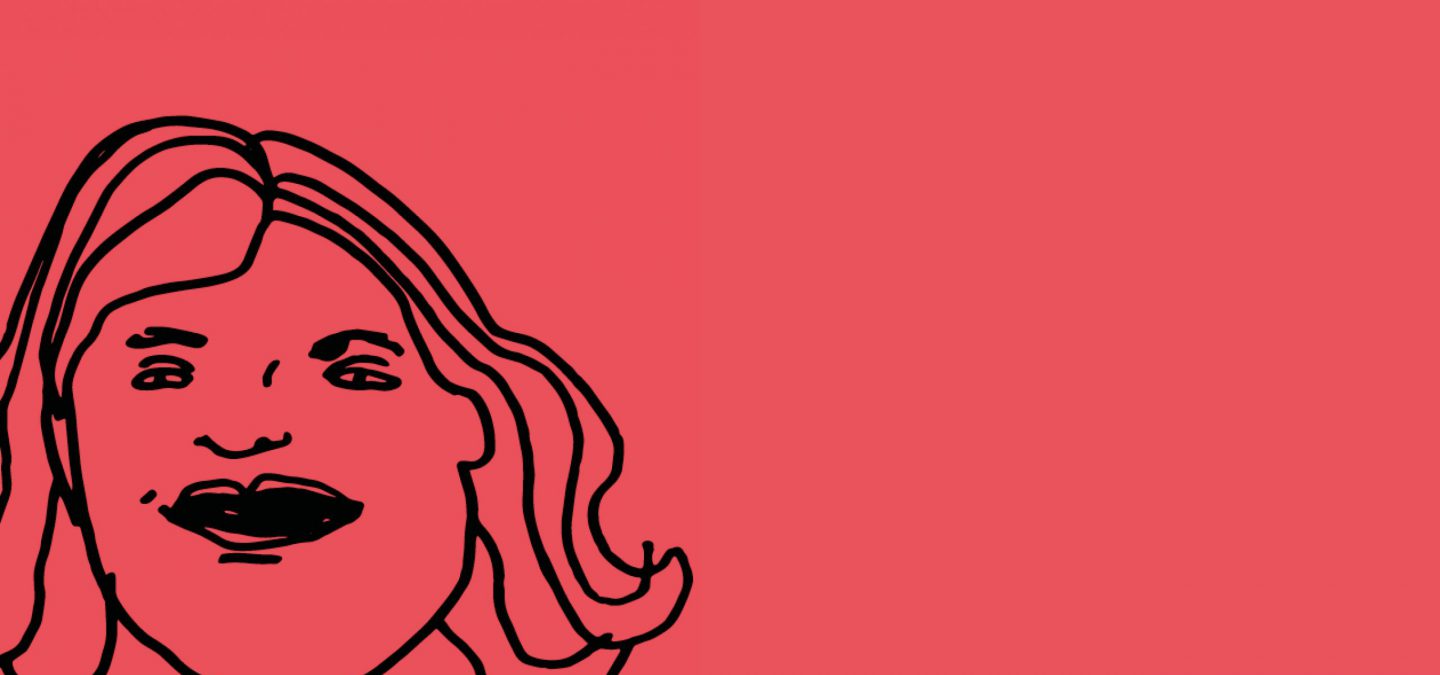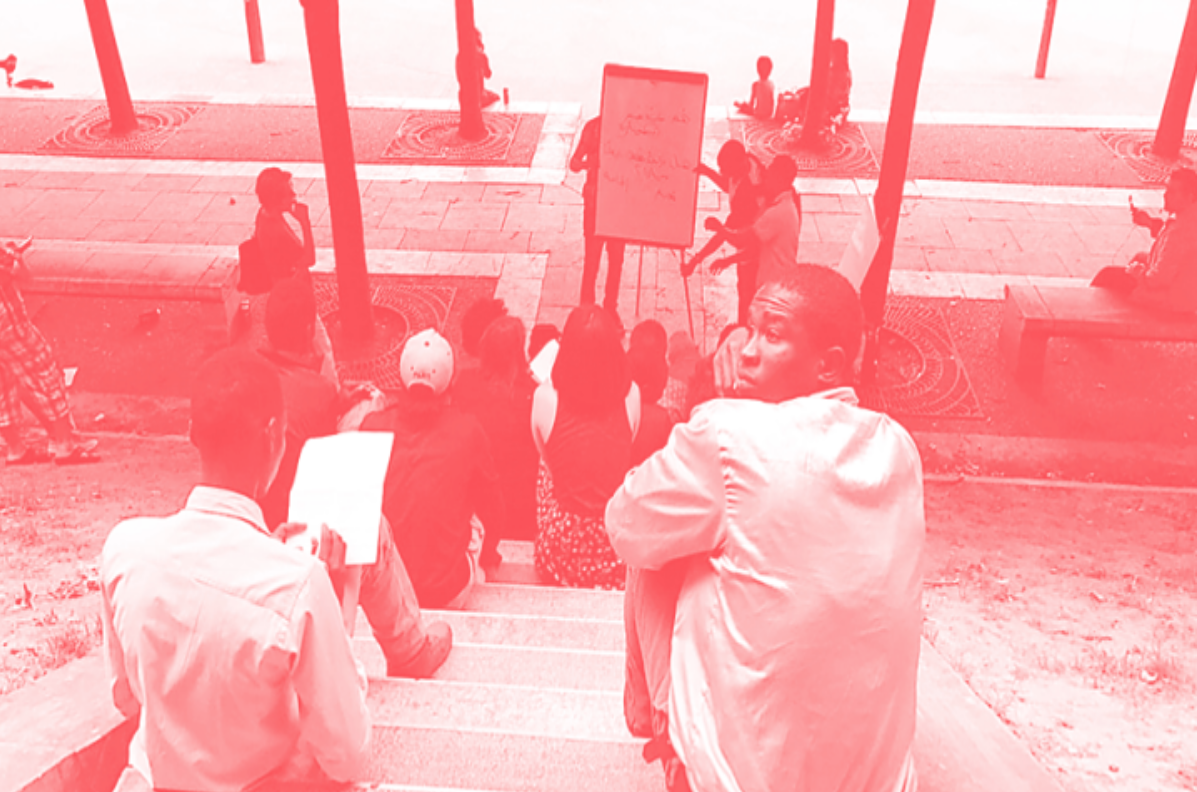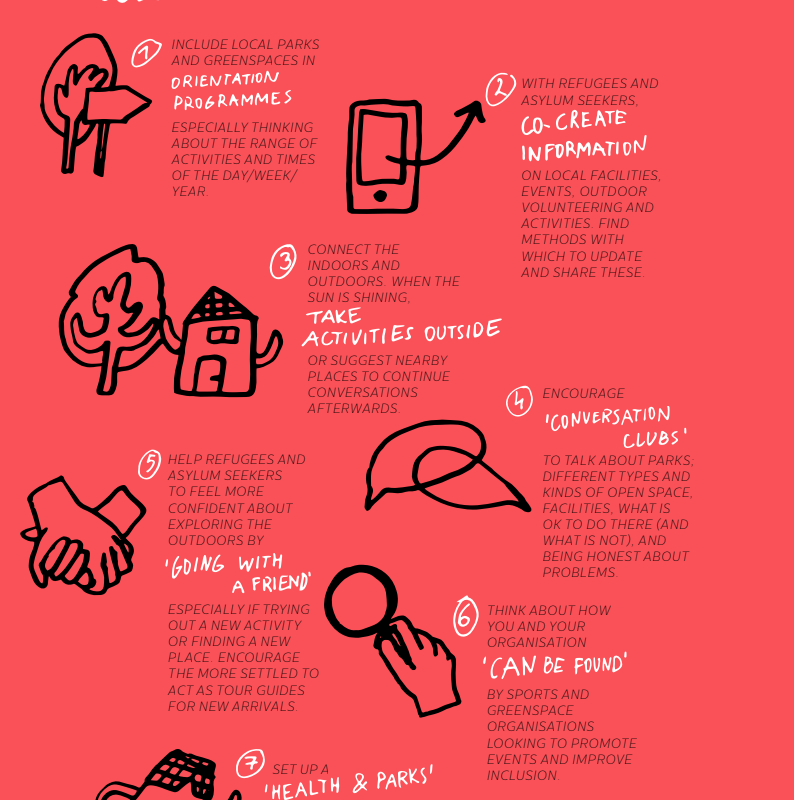
Keep up with our latest news and projects!

Refugee integration is a topic of frequent debate in urban discourses especially after the migration crisis of 2015. The European Union has established new policies within its borders to better facilitate and regulate inflows of people seeking sanctuary to ensure basic rights and accommodation. But what happens when asylum seekers and refugees find a city or town where they can settle? Are their problems finally over? Or is it just the beginning of a new journey for them to become members of a new society? We spoke with Clare Rishbeth, who is the lead of the “#RefugeesWelcome in parks” project, to provide us with some insight on the current situation of refugees, and how her project links use of urban greenspaces with integration and provides some guidance for good practice.
It is important to consider that the existence of parks doesn’t necessarily mean that they are always equally accessible for all. More positively, could these public spaces be more instrumental in promoting inclusivity? This was the central question of the research project #RefugeesWelcome in Parks, which interviewed refugees and asylum seekers in three different cities, (Sheffield and London, UK and Berlin, Germany) and also many organisations across two sectors: greenspace management and refugee integration. The focus was on urban parks used for recreation, not on parks potentially appropriated for temporary migrant accommodation in tents.
To locals, visiting a park is an activity that is usually of minimal risk. They know what is usual to do in these spaces, at what times, and what they enjoy. But for a refugee or asylum seeker, it is not so simple, and the research found that there were a number of barriers for them in using parks.
To visit a public space and to become part of the activity requires a level of confidence: You need a certain boldness to venture out’ observed Mercy, a Kenyan woman seeking asylum in London. This can be shaped by their own experience of harassment, or confusion about cultural norms in unfamiliar types of parks, and a worry about getting it wrong or not fitting in.
One way that the unfamiliar can be made easier is if you ‘go with a friend’. In many of the home countries of asylum seekers and refugees spending time outside is a very sociable kind of activity. But many people caught up in forced migration have extremely fractured social networks and are often very isolated. So the project explored how providing an easy-to-access social context could be one way to improve use and the wellbeing benefits of using greenspace.
‘Sociability is really an important way to experience public space and it’s not necessarily about being in a big group of people all the time but thinking about social context and cultures of how people want to join in.’
We developed the term ‘curated sociability’ to describe activities that do this. This can mean different things in different contexts and appealing to different interests, but usually does involve some aspect of ‘curation’ – of some low key facilitation by peers, organisations, or people willing to share their own enthusiasm. Examples included sports, walking groups, gardening projects, informal orientation, or even just taking activities outside when the weather is good. Social connections and networking play a crucial role in the well-being of refugees. Feeling a vital part of any community, even a sports team, can prove beneficial to their sense of belonging and personal wellbeing. Taking part can help refugees and asylum seekers feel positive about their identity and skills (not just as a number in a system) and give them a weekly event to look forward to amidst difficult life situations.
The experiences of refugees with the low-entry open air language classes that were organised in Paris on the stairs of a building provide good insights. The interviewed refugees shared that:
According to Clare, participation is key:
‘As soon as you’re in a group it’s a very different situation. That can give confidence and an informal way of sharing support’.
Potential interactions with locals sharing a common interest can help destigmatizing asylum seekers and refugees. There is the added benefit that by doing activities outside they are visible in the community and this has the potential more broadly to challenge local misconceptions.

Refugees and asylum seekers often find themselves constrained; they have little opportunity to make their own choices and pursue their personal goals. Initiatives similar to that of Clare and her team can increase refugees’ confidence by allowing them to make well-informed choices about where to go in a city.
Many refugees and asylum seekers struggle with poor mental health, and all of them are trying to find their feet and their own sense of being and belonging in a new cultural context. Respite (as potentially provided by outdoor places and activities) can be about peaceful relaxation, the enjoyment of taking part in familiar activities, or the pleasure of doing something you are good at.
Most initiatives are supported by (and in turn support) social relationships. The human to human element is important: both between organisations and refugees or asylum seekers, and within the friendship networks of the newly arrived.

Clare and her team found that activities should involve a combination of the following elements:
There is wide-ranging research on the positive impact of spending time outdoors in natural places as beneficial for wellbeing . This was also emphasised by many of the participants who took part in the project. Being outdoors can help them feel calmer and gives a sense of relief from some of the pressures and boredom of being in a legal limbo. Well maintained parks can provide a more pleasurable location to look after their kids or spend time with friends than poor quality housing or institutionalised support settings. When hanging out in a park it is possible (even temporarily) to feel ‘normal’, evoking a feeling of being at home. ‘When we sit in the park we say hello to people. When we see someone with an Arabic face we talk to them, but we talk to anyone if they can understand our English’. (Khalid, m, London/Syria)
Parks and other kinds of urban greenspaces can make a positive contribution to refugee integration and wellbeing. The findings and the case studies give a good sense of small initiatives that can help counter barriers and ensure that experiences of parks are welcoming. And though targeted particularly at the experience of asylum seekers and refugees, there are important points here about how an intentional considered inclusivity can guide those involved with urban placemaking into shaping a more humanitarian society.
Learn more about the project here www.refugeeswelcomeinparks.com